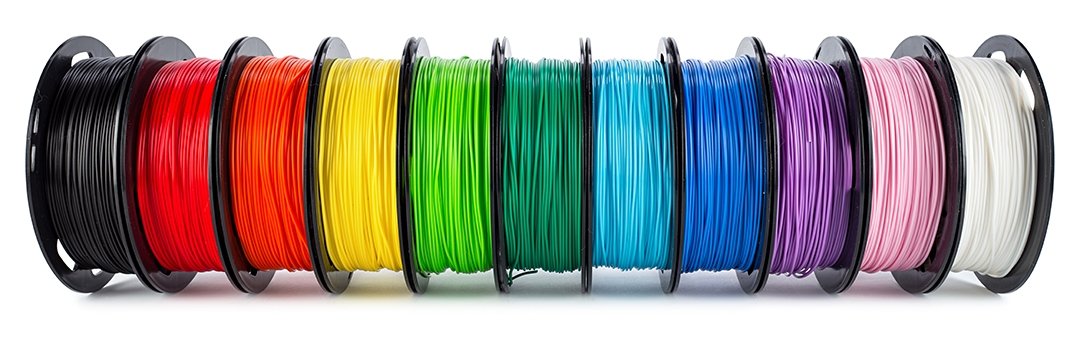
The Ultimate Guide to 1.75mm and 2.85mm Filaments: Differences, Benefits, and Drawbacks
Share
In the world of 3D printing, the choice between 1.75mm and 2.85mm filaments can be a significant factor in determining print quality, efficiency, and overall user experience. As a 3D printing enthusiast or professional, understanding the differences between these two filament sizes can help you make informed decisions when selecting a 3D printer or nozzle unclogging solution like NoClogger. In this article, we will delve into the fundamental differences between 1.75mm and 2.85mm filaments, their respective pros and cons, and how NoClogger accommodates both sizes with its innovative product offerings.
- Filament Diameter: The Basic Difference
The most obvious difference between 1.75mm and 2.85mm filaments is their diameter. While 1.75mm filaments are thinner and more flexible, 2.85mm filaments are thicker and stiffer. This difference in diameter directly impacts the 3D printing process, affecting factors such as extrusion force, print speed, and print resolution.
- Extrusion Force
The force required to extrude the filament through the nozzle during the printing process is an essential factor to consider. In general, 1.75mm filaments need less force to be extruded compared to 2.85mm filaments. This is because the cross-sectional area of the 1.75mm filament is smaller than that of the 2.85mm filament, resulting in lower resistance as it passes through the nozzle.
Less force required to extrude 1.75mm filament offers several advantages:
- Reduced stress on the extruder motor, potentially increasing its lifespan.
- Faster retraction times, resulting in fewer stringing and oozing issues.
- Easier extrusion of flexible filaments, such as TPU or TPE.
However, it's essential to consider that the smaller cross-sectional area of 1.75mm filament may also make it more susceptible to breaking or snapping under tension, especially with brittle materials like ABS or carbon fiber-infused filaments.
- Print Speed
The print speed is another crucial aspect influenced by the choice of filament diameter. Due to their smaller cross-sectional area, 1.75mm filaments tend to heat up and melt faster, enabling quicker print speeds. On the other hand, 2.85mm filaments take longer to heat and melt, which may result in slower print speeds.
However, this is not always a drawback. Slower print speeds can sometimes lead to better print quality, as the printer has more time to lay down each layer accurately.
- Print Resolution
The print resolution is the level of detail that can be achieved in a printed object. In general, 1.75mm filaments can provide higher print resolution due to their smaller diameter, which allows for more precise control over the extrusion process. This precision can be especially advantageous when printing intricate models with fine details or sharp edges.
In contrast, 2.85mm filaments may not offer the same level of precision due to their larger diameter. However, they can still provide excellent print quality, particularly in larger-scale prints or when using materials that benefit from slower printing speeds.
- Material Availability
Both 1.75mm and 2.85mm filaments are widely available in various materials, including PLA, ABS, PETG,
TPU, and more. However, 1.75mm filaments tend to be more popular and, as a result, may offer a broader range of material options, colors, and specialty filaments. This increased availability can be advantageous if you're looking to experiment with different materials or require specific colors for your projects.
On the other hand, while 2.85mm filaments may have a slightly narrower range of options compared to 1.75mm filaments, they still provide a wide variety of materials to choose from. If you're using a 3D printer that supports 2.85mm filaments, you should still be able to find suitable materials for your printing needs.
- Compatibility with 3D Printers
When choosing a filament size, it's essential to consider compatibility with your 3D printer. Some 3D printers exclusively support 1.75mm filaments, while others are designed for 2.85mm filaments. Some printers offer compatibility with both sizes through interchangeable components or settings, but this is less common.
Before purchasing a 3D printer or filament, make sure to check the specifications and ensure that the printer supports the desired filament size. Additionally, keep in mind that some 3D printers may require a specific brand or type of filament, so always consult the manufacturer's recommendations.
- NoClogger Solutions for Both Filament Sizes
NoClogger understands the importance of catering to both 1.75mm and 2.85mm filament users, which is why we've developed two distinct versions of our innovative nozzle unclogging solution. No matter which filament size your 3D printer uses, you can rely on NoClogger to help maintain seamless printing experiences and eliminate frustrating nozzle clogs.
Our NoClogger for 1.75mm Filament Printers and NoClogger for 2.85mm Filament Printers are designed specifically to accommodate each respective filament size, ensuring optimal performance and effectiveness. With NoClogger, you can enjoy the benefits of your preferred filament size without worrying about nozzle clogs disrupting your 3D printing projects.
Conclusion:
The choice between 1.75mm and 2.85mm filaments largely depends on your specific 3D printing needs, printer compatibility, and personal preferences. Each filament size offers its unique advantages and disadvantages, so it's essential to consider factors such as extrusion force, print speed, print resolution, material availability, and printer compatibility when making your decision.
NoClogger is committed to supporting both 1.75mm and 2.85mm filament users with our innovative nozzle unclogging solutions. Regardless of the filament size you choose, you can trust NoClogger to help you maintain smooth, uninterrupted 3D printing experiences and tackle nozzle clogs with ease.
